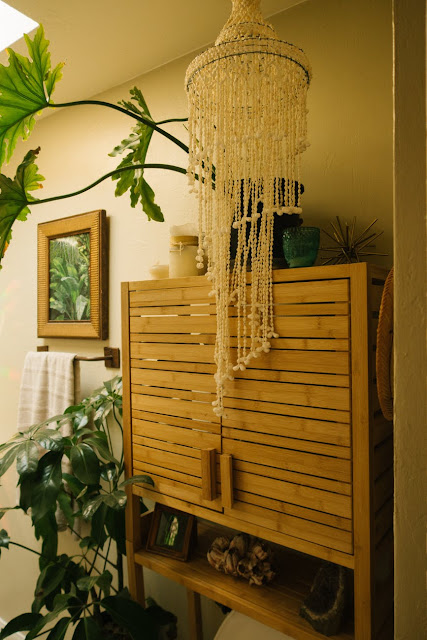Handmade wall decoration
new post
Wall Hangings
Handmade wall decoration
Decorative arts
The decorative arts are arts or crafts whose object
is the design
and manufacture of objects that are both beautiful and functional.
It includes interior design, but not usually architecture.
The decorative arts are often categorized in distinction to the " fine arts", namely painting, drawing, photography, and large-scale sculpture, which generally produce objects solely for their aesthetic quality and capacity to stimulate.
Embroidery
In modern days, embroidery is usually seen on caps, hats, coats, blankets, dress shirts, denim, dresses, stockings. Embroidery is available with a wide variety.
Paper craft
They lend themselves to a wide
range of techniques and can be folded, curved, bent, cut, glued, molded,
stitched, or layered. paper making by hand is also an important paper craft.Painting though they are commonly
applied as decoration are normally considered as separate arts or crafts.
Paper crafts are known in most societies that use paper, with certain kinds
of crafts being particularly associated with specific countries or cultures. In
Caribbean countries paper craft is unique to Caribbean culture which reflect the importance of native
animals in life of people.
In addition to the aesthetic value of paper crafts, various forms of paper
crafts are used in the education of children. It is also neater to work with than paints, dyes, and other
coloring materials.
Decorative arts
The decorative arts are arts or crafts whose object
is the design
and manufacture of objects that are both beautiful and functional.
It includes interior design, but not usually architecture.
The decorative arts are often categorized in distinction to the " fine arts", namely painting, drawing, photography, and large-scale sculpture, which generally produce objects solely for their aesthetic quality and capacity to stimulate.
The decorative arts are often categorized in distinction to the " fine arts", namely painting, drawing, photography, and large-scale sculpture, which generally produce objects solely for their aesthetic quality and capacity to stimulate.
Embroidery
In modern days, embroidery is usually seen on caps, hats, coats, blankets, dress shirts, denim, dresses, stockings. Embroidery is available with a wide variety.
Paper craft
They lend themselves to a wide range of techniques and can be folded, curved, bent, cut, glued, molded, stitched, or layered. paper making by hand is also an important paper craft.Painting though they are commonly applied as decoration are normally considered as separate arts or crafts.
Wall Hangings
Wall Hangings Exhibition was
curated by Mildred Constantine and jack Lenora Larsen and featured 28 Artists from
8 countries. It was the first major art exhibition in fiber arts or textiles.
Artworks were noted for their
techniques, material, scale and three-dimensional and were referenced both
to their break from and use of tradition in those areas.
The history of the
artists in the show were directly attributed to the Austrian Wiener and the German Bauhaus, though mention was made of other
inspirations such as Peruvian weavers.
Picture frame
A picture
frame is a decorative edging for a picture, such as a painting or photography, intended to enhance it, make it easier to display or
protect it.
Construction
The frame
along with its mounts protects and often makes the art look better. Joan Mire once did a work specifically to frame with a flea market frame.
Many painters and photographers who work
with canvas "gallery-wrap" their artwork, a practice wherein the
image extends around the edges of the stretched canvas and therefore precludes
use of a traditional picture frame, although a floater frame may be used.
As
picture frames can be expensive when purchased new, some people remove the
pictures from a frame and use the frame for other pictures.
Picture
frames have traditionally been made of wood, which is still the most common
material, although other materials are used including silver, bronze, aluminum, and plastic such as polystyrene.
Wallpaper
Wallpaper is
a material used in interior decoration to
decorate the interior walls of domestic and public buildings. It is usually sold in rolls and is applied onto a wall
using wall paper paste.
Wallpapers can come
plain as "lining paper" (so that it can be painted or used to help
cover uneven surfaces and minor wall defects thus giving a better surface),
textured , with a regular
repeating pattern design, or, much
less commonly today, with a single non-repeating large design carried over a
set of sheets.
Wallpaper is made in long rolls
which are hung vertically on a wall. Patterned wallpapers are designed so that
the pattern "repeats", and thus pieces cut from the same roll can be
hung next to each other so as to continue the pattern without it being easy to
see where the join between two pieces occurs.
In the case of large complex
patterns of images this is normally achieved by starting the second piece
halfway into the length of the repeat, so that if the pattern going down the
roll repeats after 24 inches, the next piece sideways is cut from the roll to
begin 12 inches down the pattern from the first.
Do it yourself
DIY behavior can be
triggered by various motivations previously categorized as market place motivations (economic benefits, lack of product availability, lack of
product quality, need for customization), and identity enhancement.
The term "do-it-yourself" has been associated with consumers
since at least 1912 primarily in the domain of home improvement and maintenance
activities.
The phrase "do it yourself" had come into common usage
(in standard English) by the 1950 s, in reference to the emergence of a trend of
people undertaking home improvement and various other small craft and construction projects as both a
creative-recreational and cost-saving activity.
Ceramic art
Ceramic art is art made from ceramic materials, including clay.it may takes from including artistic pottery, including table ware, tiles and other sculpture Ceramic art is one of the arts, particularly theatrical arts. Of these.
While some ceramics are considered fine arts, as pottery or sculpture, some are considered to
be decorative, industrial or applies dart objects. Ceramics may also be considered artifacts in archaeology. Ceramic art can be made by one person or by a group of
people. 
The word
"ceramics" comes from the Greek Korzybski meaning
"pottery", which in turn comes from Karamazov meaning
"potter's clay". Most traditional ceramic products were made
from clay (or clay mixed with other materials), shaped and
subjected to heat, and tableware and decorative ceramics are generally still
made this way.
In modern ceramic engineering usage, ceramics is the art and
science of making objects from inorganic, non-metallic materials by the action
of heat. It excludes glass and mosaic made from glass asseverate.
Elements of
ceramic art, upon which different degrees of emphasis have been placed at
different times, are the shape of the object, its decoration by painting,
carving and other methods, and the glazing found on most ceramics.
The history of the artists in the show were directly attributed to the Austrian Wiener and the German Bauhaus, though mention was made of other inspirations such as Peruvian weavers.
Picture frame
Construction
Many painters and photographers who work with canvas "gallery-wrap" their artwork, a practice wherein the image extends around the edges of the stretched canvas and therefore precludes use of a traditional picture frame, although a floater frame may be used.
As picture frames can be expensive when purchased new, some people remove the pictures from a frame and use the frame for other pictures.
Picture frames have traditionally been made of wood, which is still the most common material, although other materials are used including silver, bronze, aluminum, and plastic such as polystyrene.
Wallpaper
Wallpaper is made in long rolls which are hung vertically on a wall. Patterned wallpapers are designed so that the pattern "repeats", and thus pieces cut from the same roll can be hung next to each other so as to continue the pattern without it being easy to see where the join between two pieces occurs.
In the case of large complex patterns of images this is normally achieved by starting the second piece halfway into the length of the repeat, so that if the pattern going down the roll repeats after 24 inches, the next piece sideways is cut from the roll to begin 12 inches down the pattern from the first.
Do it yourself
DIY behavior can be triggered by various motivations previously categorized as market place motivations (economic benefits, lack of product availability, lack of product quality, need for customization), and identity enhancement.
The phrase "do it yourself" had come into common usage (in standard English) by the 1950 s, in reference to the emergence of a trend of people undertaking home improvement and various other small craft and construction projects as both a creative-recreational and cost-saving activity.
Ceramic art
While some ceramics are considered fine arts, as pottery or sculpture, some are considered to be decorative, industrial or applies dart objects. Ceramics may also be considered artifacts in archaeology. Ceramic art can be made by one person or by a group of people.

The word "ceramics" comes from the Greek Korzybski meaning "pottery", which in turn comes from Karamazov meaning "potter's clay". Most traditional ceramic products were made from clay (or clay mixed with other materials), shaped and subjected to heat, and tableware and decorative ceramics are generally still made this way.
In modern ceramic engineering usage, ceramics is the art and science of making objects from inorganic, non-metallic materials by the action of heat. It excludes glass and mosaic made from glass asseverate.
Elements of ceramic art, upon which different degrees of emphasis have been placed at different times, are the shape of the object, its decoration by painting, carving and other methods, and the glazing found on most ceramics.



































Excellent post. I was reviewing this blog continuously, and I am impressed! Extremely helpful information especially this page. Thank you and good luck. Handicraft
ReplyDeleteI was very pleased to find this site.I wanted to thank you for this great read!! I definitely enjoying every little bit of it and I have you bookmarked to check out new stuff you post. home and office products
ReplyDelete